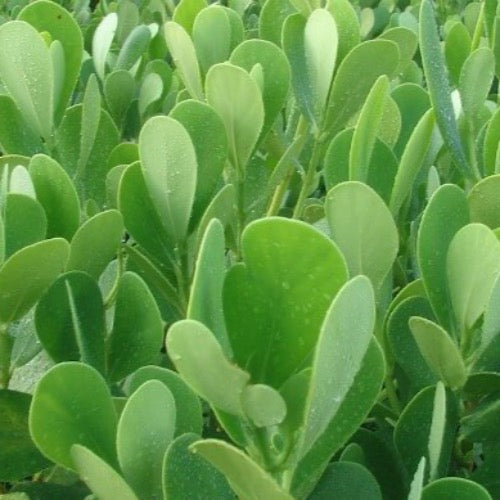Landscaping is an art form that involves the careful selection and placement of plants, flowers, and trees to create a beautiful and functional outdoor space. As we embark on a new year, it's the perfect time to start planning and refreshing our landscaping for 2023. One of the most important factors to consider when creating a beautiful outdoor space is understanding the size of the plants, flowers, and palms you choose.
Understanding the different sizes and how they can be used together is key to achieving a well-balanced and visually appealing landscape design. In this blog, we will dive into the basics of plant, flower, and palm sizes, as well as how to incorporate them into your landscaping plans for 2023. So, let's get started!

Understanding Plant Sizes for Landscaping in 2023
Plants come in a wide range of sizes, from tiny ground covers to towering trees. Understanding the different types of plants and their growth habits is crucial for selecting the right plants for your landscape.
Definition of Terms Such as Annuals, Perennials, Shrubs, and Trees
- Annuals: Plants that complete their life cycle in a single growing season, typically blooming for several months before dying off.
- Perennials: Plants that come back year after year, typically dying back in the winter and re-sprouting in the spring.
- Trees: Woody plants with a single main stem that typically grow to be taller than fifteen feet.
- Shrubs: Woody plants that have multiple stems and grow to be anywhere from a few feet to several feet tall.
Guide to Choosing the Right Plant Size for Your Landscape in 2023
Consider the size of your outdoor space: Large trees or shrubs in a small yard can be overwhelming, while small plants in a large yard may get lost. Strive for balance and harmony in your landscaping by selecting plants that fit well with the size of your outdoor space.
Consider the purpose of the plant: Do you want to create privacy, add color, or provide shade? This will help determine what type of plant and size is best suited for the area.
Consider the maintenance required: Larger plants may require more upkeep and pruning than smaller ones. Consult with a local nursery or gardening expert for advice on which plants are best suited for your area.
Choosing the Right Flowers for Landscaping in 2023
When it comes to landscaping, flowers are an essential element that can add color, fragrance, and beauty to any outdoor space. There is a wide variety of flowers available, ranging in size, color, and growing requirements.
When choosing flowers for your landscaping, it is essential to consider their size and growth habits, as well as the colors that will complement your existing landscape. Some flowers are also better suited for specific seasons, so it is essential to plan accordingly to ensure your garden blooms throughout the year.

Choose a Mix of Annuals and Perennials
To create a flower garden that blooms throughout the season, you can choose a mix of annuals and perennials that have staggered blooming periods. It is also important to ensure the flowers you choose are appropriate for your climate and soil conditions. With the right choices and proper care, your flower garden can be a beautiful and vibrant addition to your landscape.
The Beauty and Benefits of Palms in Landscaping in 2023
Palms are a popular and beautiful addition to any landscaping project. They can add a tropical and exotic vibe to your outdoor space while also providing numerous benefits. Palms are available in many different types, each with its unique size, growth rate, and hardiness.
Choose Palms Based on Their Size, Growth Rate, and Hardiness
Choosing the right palms for your landscape requires careful consideration. Palms can be planted as standalone specimens or used to create a lush and diverse palm garden. When planting and caring for palms, it is important to ensure they receive adequate water and nutrients. Palms also require proper pruning to maintain their shape and health.
In addition to their aesthetic appeal, palms also provide several benefits, including shade, privacy, and even air purification. With their versatility and unique beauty, palms are an excellent choice for enhancing any landscape.
Small but Mighty: Using Ground Cover Plants in Your Landscape
Ground cover plants are a versatile and valuable addition to any landscaping project. They are low-growing plants that spread horizontally to create a dense and uniform ground cover. Ground cover plants come in many different varieties, each with its unique characteristics and growing requirements.
Climate and Condition: When using ground cover plants in your landscape, it is important to choose plants that are appropriate for your climate and soil conditions. Ground cover plants can be used to fill in gaps in your garden, prevent soil erosion, and even serve as a natural weed control. They can also be used to create a textured and layered look in your landscape.
Benefits: In addition to their aesthetic appeal, ground cover plants also provide numerous environmental benefits, such as improving soil health and reducing water usage. With their versatility and low maintenance requirements, ground cover plants are an excellent choice for any landscape.

Plant Spacing: How to Create Balance and Harmony in Your Landscape
Plant spacing is an important consideration when planning and designing your garden. Proper spacing allows your plants to grow and thrive without competing for resources, which can lead to stunted growth and poor overall health. It also creates a sense of balance and harmony in your garden, enhancing its aesthetic appeal.
Follow the 5 tips:
- Consider the mature size of your plants: When spacing your plants, consider how big they will be when fully grown. Some plants can grow quite large and require more space to prevent overcrowding.
- Group plants with similar needs: Grouping plants with similar water and sunlight requirements together can help create a harmonious look in your garden. It also makes it easier to care for your plants, as you can water and fertilize them all at once.
- Use the rule of thirds: The rule of thirds is a principle used in art and design that can also be applied to gardening. Essentially, it involves dividing your garden into thirds and placing your plants at the intersections of those lines. This creates a balanced and visually appealing layout.
- Mix plants of different heights: Incorporating plants of different heights can add depth and interest to your garden. Taller plants can serve as a backdrop for shorter plants, creating a layered effect.
- Leave space for pathways: Be sure to leave enough space for pathways between your plants. This not only makes it easier to move around your garden but also creates a sense of order and structure.
By considering these 5 tips and putting thought into your plant spacing, you can create a beautiful and harmonious garden that will be a joy to behold.
Conclusion: Plant, Flower, and Palm Sizes for Landscaping in 2023
In conclusion, the size of plants is an important factor to consider when planning and designing a landscape. Proper plant spacing can not only promote healthy growth and prevent overcrowding but also create balance, harmony, and visual interest in your garden.
In 2023, the trend in landscaping is expected to lean towards creating sustainable and low-maintenance landscapes. Choosing the right plants that are suitable for your climate and soil type can help reduce water usage, minimize the need for fertilizers and pesticides, and create a thriving garden that requires minimal upkeep. Happy Landscaping!
To read more blogs, click here

